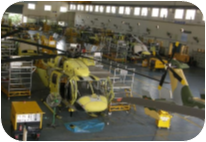The petroleum industry has two parts: an upstream oil exploration and production industry and a downstream refinery industry. The Indian Oil and Gas industry is growing rapidly and playing an important role for the development of Indian economy. Being major consumer of energy resources, India has high demand for oil, and the demand-supply gap is high.
Production and Consumption
The production of petroleum products stood at 262.9 MMT (Metric Million Tonnes) in 2019-20 as against 220.7 MMT achieved in 2014-15, registering a CAGR of about 3.56 percent. The consumption of petroleum products on the other hand stood at 213.7 MMT in the 2019-20 as compared to 165.5 MMT in 2014-15, registering a CAGR of 5.24 percent. While most petroleum products registered positive CAGR during FY15-20, the production and consumption of SKO registered negative CAGR of (-)16.42 percent and (-)19.50 percent, respectively.
Consumption of Petroleum Products
(In Metric Million Tonnes)
Production of Petroleum Products
(In Metric Million Tonnes)
Exports
The Government of India started encouraging energy companies to invest in refineries at the end of the 1990s, thus helping the country to become a net exporter of petroleum products in 2011, despite being a significant importer of crude oil. With substantial increase in refining capacity in India, exports of petroleum products have picked up since FY 2005-06, although the slowdown in global economy has affected the exports in recent years. Amidst an increasingly challenging environment of declining prices and rising competition, export of petroleum products witnessed CAGR of (-) 6.23 percent during 2014-15 to 2019-20.
Petroleum products accounted for 13.15 percent of the total exports from India in 2019-20 and registered decline of (-)11.58 percent from US$ 46.55 billion in 2018-19 to US$ 41.16 in 2019-20. Over the years, superior kerosene oiland LPG have witnessed the highest CAGRs of 38.81 percent and 3.26 percent, respectively, during 2014-15 to 2019-20.
Trends in Export of Select Petroleum Products
(In US$ Million)
FDI
As per guidelines, 100 percent FDI is allowed through the automatic route in exploration activities of oil and natural gas fields, infrastructure related to marketing of petroleum products and natural gas, petroleum products’ pipelines, natural gas pipelines, LNG regasification infrastructure, market study, formulation and petroleum refining in private sector, subject to the existing sectoral policy and regulatory framework in the oil marketing sector and the policy of the government or private participation in exploration of oil and the discovered fields of natural oil companies.
FDI up to 49 percent is allowed through the automatic route in petroleum refining by PSU, without disinvestment or dilution of domestic equity in existing PSUs. During April 2000 – March 2020, petroleum and natural gas sector received FDI inflows of US$ 7.07 billion, accounting for 1.55 percent of the total FDI inflow into the country.
Outlook
As per ICRA, India’s petroleum products demand growth is expected to stay between 1 percent and 3 percent in 2020-2021. The capacity utilisation of domestic refineries would improve in 2020- 21 as most of the refineries have undergone shutdown during 2019-20 in preparation of the shift to Bharat Stage VI (BS VI) fuel. The Gross Refinery Margin (GRM) of refiners have weakened considerably in first half ofFY2020 due to compression in light-heavy crude spreads, brought about by supply glut in light-sweet crudes and voluntary supply cut of heavy crude by OPEC+ allies. Higher processing of light crudes also resulted in excess supply of light and middle distillates, pulling down their crack spreads.
ICRA expects gross refinery margin of domestic refiners to improve in 2020-21 on the back of an increase in gasoil product cracks due to implementation of International Maritime Organisation’s new fuel specification for marine fuels. The 'India Energy Outlook' 2020 projects a dramatic surge in net oil imports to more than 90 percent by 2040. Although the natural gas consumption is expected to grow three- fold to 175 bcm, it will still play a limited role in the overall energy mix at 8 percent. In case of power generation over 50 percent of the new capacity will come from renewables.
The outlook of the industry looks neural in the midterm.




























